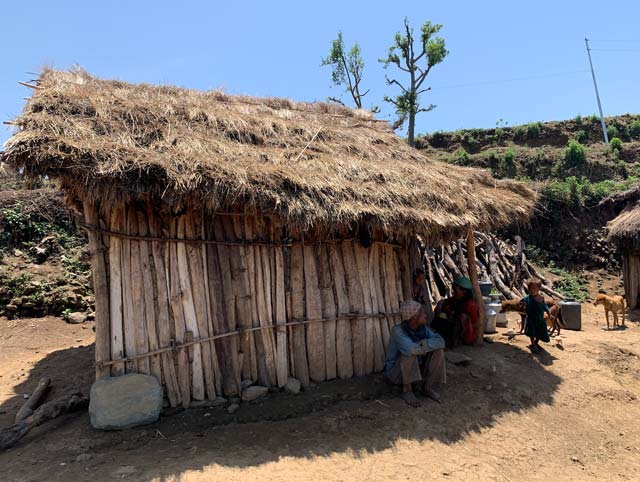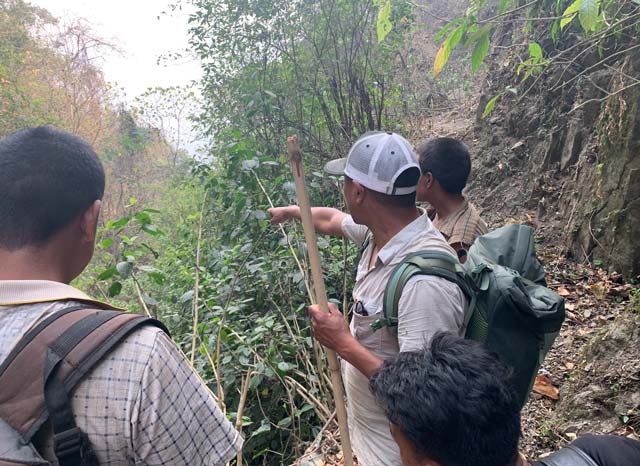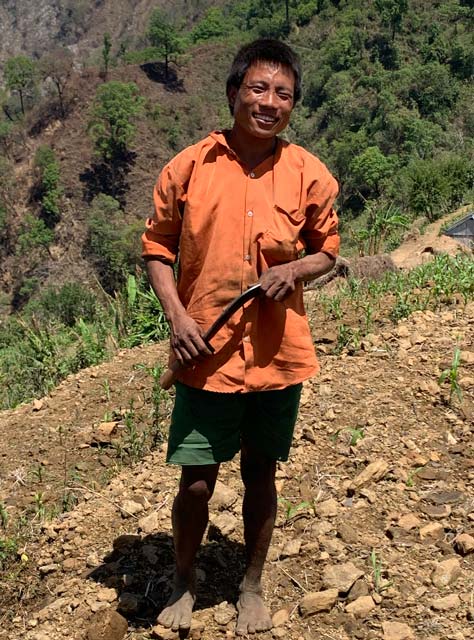The Makwanpur District, southwest of Kathmandu, is known for its rugged terrain and temperate climate, with several rural villages scattered across the map.
The Chepang people, an Indigenous Tibeto-Burman ethnic group, call the Makwanpur District’s most remote corners home, living in sheds made of tree branches clinging to the region’s steep hillsides. Altogether, there are around 50,000 Chepang people currently in Nepal. As a highly vulnerable population facing many challenges, Chepang villages are a focal point for Elevate Nepal’s Sanitation & Potable Water Project.
Often considered the “poorest of the poor” in Nepal, the Chepang are among the nation’s most systematically disempowered groups. The United Nations identifies several vulnerabilities, including a lack of access to education and indigenous political representation, especially in relation to the use of natural resources, and the weak implementation of favorable legislation.
- Lack of Access to Education
75% of the Chepang population is illiterate and a mere 1% of Chepang women can read and write. Remote Chepang settlements often have only a primary school, forcing students to walk miles, often across difficult terrain, to attend secondary school. Moreover, parents frequently remove their children from school to assist with household, agricultural, and wage work. - Loss of Ancestral Lands
Although Nepal is lauded for its conservation practices, indigenous groups are frequently left out of the equation or forcibly removed from their ancestral lands. This is exactly what happened when the Private Forest Nationalization Act of 1957 included all forest land under the category of government ownership. Although the Chepangs had traditionally managed the forests for centuries, they were given no compensation or legal protection with the passage of this legislation. - Abusive Conservation Policies
A report from Amnesty International found Nepal’s Indigenous peoples have suffered a litany of human rights violations over the past five decades as a result of abusive conservation policies. The establishment of National Parks and other protected areas has resulted in the forcible and violent eviction of tens of thousands of Indigenous people. - Food Insecurity
The Chepang have gradually transitioned from a nomadic “slash-and-burn” lifestyle to an agricultural one, growing crops like maize, millet and bananas in rocky, nutrient-poor soil. Their diet is supplemented with foraged foods, hunting wild game and fishing in nearby rivers. Yields are low and, due to climate change-related drought and later monsoons, starvation is an ever-present concern.

Barriers to Development
Elevate Nepal is not the first organization to focus their efforts on Chepang communities, although most development projects have resulted in little to no impact. The U.N. notes that marginalized Indigenous groups, such as Chepangs, have little say in decision making and governance structures, and are therefore excluded from many development efforts at the national and local levels.
Moreover, interviews with Chepang people have highlighted a lack of ownership in the projects targeting them. For the greatest impact, development must be community oriented and promote participation at all levels. Finally, there must be an effort to reach the most impoverished Chepang communities, which often live in mountainous, hard-to-access areas.
Elevate Nepal Takes a Different Approach

Clean water is the foundation of strong development, but many Chepang villages do not have a single tap. Villagers, often young women, are required to spend hours hiking to and from springs in the mountains. During the dry season (which has become longer and more intense due to climate change), these trips become more frequent and water sources are more scarce.
Piping clean, potable water to these remote areas will support crops and long-term community development. Furthermore, we work closely with local leaders to identify the most effective routes to deliver aid, and employ local workers to provide a source of income and teach transferable skills. Even more importantly, we plan to monitor this project over the years to ensure it is maintained and operating properly.
Read Part Two of our three-part blog series to discover the details for our proposed solution.


